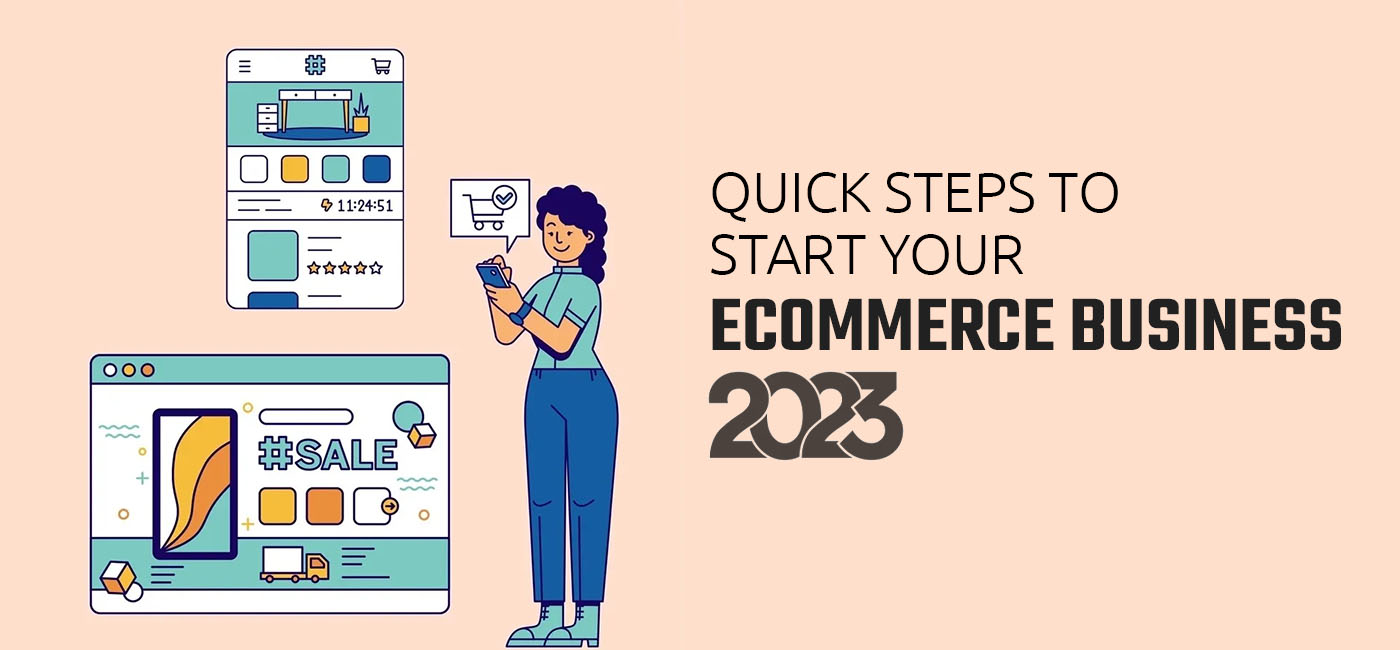
Quick Steps to start an online E-commerce Store in 2023
When I asked Chat GPT, “Tell me a business plan to become a billionaire with just an investment of $50 and I’ve no experience”. It replies, “Start an e-commerce store and sell trending products online” and it also mentioned the steps to achieve it.
Isn’t it amazing?
There is still a lot of undiscovered potential in the e-commerce business and this thought pushed me to write a short article to guide you on how to start an online commerce business.
Starting an online e-commerce store can be a daunting task, but with the right approach and guidance, it can be a successful venture. With the rise of eCommerce platforms, anyone can start their own online store with minimal investment. Here are some quick steps to get started with your online e-commerce store in 2023:
Step 1: Choose a Niche and Product
The first step in starting an e-commerce store is to choose a niche and product. Your niche should be something you are passionate about and have knowledge of. Once you have chosen your niche, research the products in the market and select a product that has a high demand and low competition. For example, You might notice a lack of high-quality vegan food options in your area, so you could start a vegan restaurant or meal delivery service or you might target athletes who need specialized supplements or clothing or elderly people who need products designed for their specific health concerns. The most important point to keep in mind is whatever niche you choose, you must have an interest in it.
Step 2: Register Your Business
Next, you need to register your business. Choose a business name, and register it with the relevant authorities in your country. It will give your business legitimacy and enable you to open a business bank account. It helps establish credibility and trust with customers, suppliers, and partners as it shows that your business is legitimate and follows the rules and regulations set by the government. It enables you to access business loans, grants, and other financial resources that are only available to registered businesses. Lastly, registering your business makes it easier to comply with tax laws, which is essential for avoiding penalties and legal consequences.
Step 3: Build Your Website
Your website is your storefront, and it is essential to create a website that is user-friendly, easy to navigate, and visually appealing. Choose a reliable e-commerce platform such as Shopify, WooCommerce, or BigCommerce to build your website. A well-designed website can establish credibility, build trust, and provide customers with the information they need to make informed purchasing decisions. It also allows businesses to reach a wider audience and expand their market beyond geographical boundaries. Moreover, having a website can streamline operations, reduce costs, and enhance customer service, making it a crucial element in achieving success in today's digital age.
Step 4: Add Products and Payment Gateway
Once your website is up and running, add your products and payment gateway. Ensure that your payment gateway is secure and reliable to build trust with your customers. You can also integrate your website with shipping providers to ensure that your products are delivered safely and on time. By having a comprehensive product catalog, customers can easily find what they are looking for, which can increase sales and revenue for the business. A payment gateway provides a secure and convenient way for customers to make purchases, which can improve customer trust and satisfaction.
Step 5: Marketing and Advertising
Marketing and advertising are essential for any e-commerce website to succeed in the competitive online marketplace. Effective marketing and advertising campaigns can attract potential customers, drive traffic to the website, and increase sales. With so many e-commerce websites vying for attention, standing out from the crowd is crucial. Marketing and advertising allow businesses to showcase their unique value propositions, promote their products, and create brand awareness. By utilizing various marketing and advertising strategies such as social media advertising, email marketing, and search engine optimization, e-commerce websites can reach a wider audience and build a loyal customer base. In short, marketing and advertising are vital components of any successful e-commerce strategy.
Step 6: Customer Service and Feedback
Customer service is key to retaining customers and building a loyal customer base. Ensure that you have a dedicated customer service team that responds to queries and concerns promptly. Encourage customers to leave feedback on your products and services and use the feedback to improve your business. Engagement with Customers is also very important to track the performance of your website. So keep interacting with your customers.
Step 7: Analytics and Reporting
Analytics and reporting are essential to understanding how your business is performing. Use tools such as Google Analytics to track website traffic, customer behavior, and sales. Use the insights to make data-driven decisions and optimize your website and marketing strategies.
In conclusion, starting an online e-commerce store requires careful planning, research, and execution. Choose a niche and product, register your business, build your website, add products and payment gateway, focus on marketing and advertising, offer excellent customer service, and track your performance through analytics and reporting. With these quick steps, you can start your e-commerce store and achieve success in 2023.